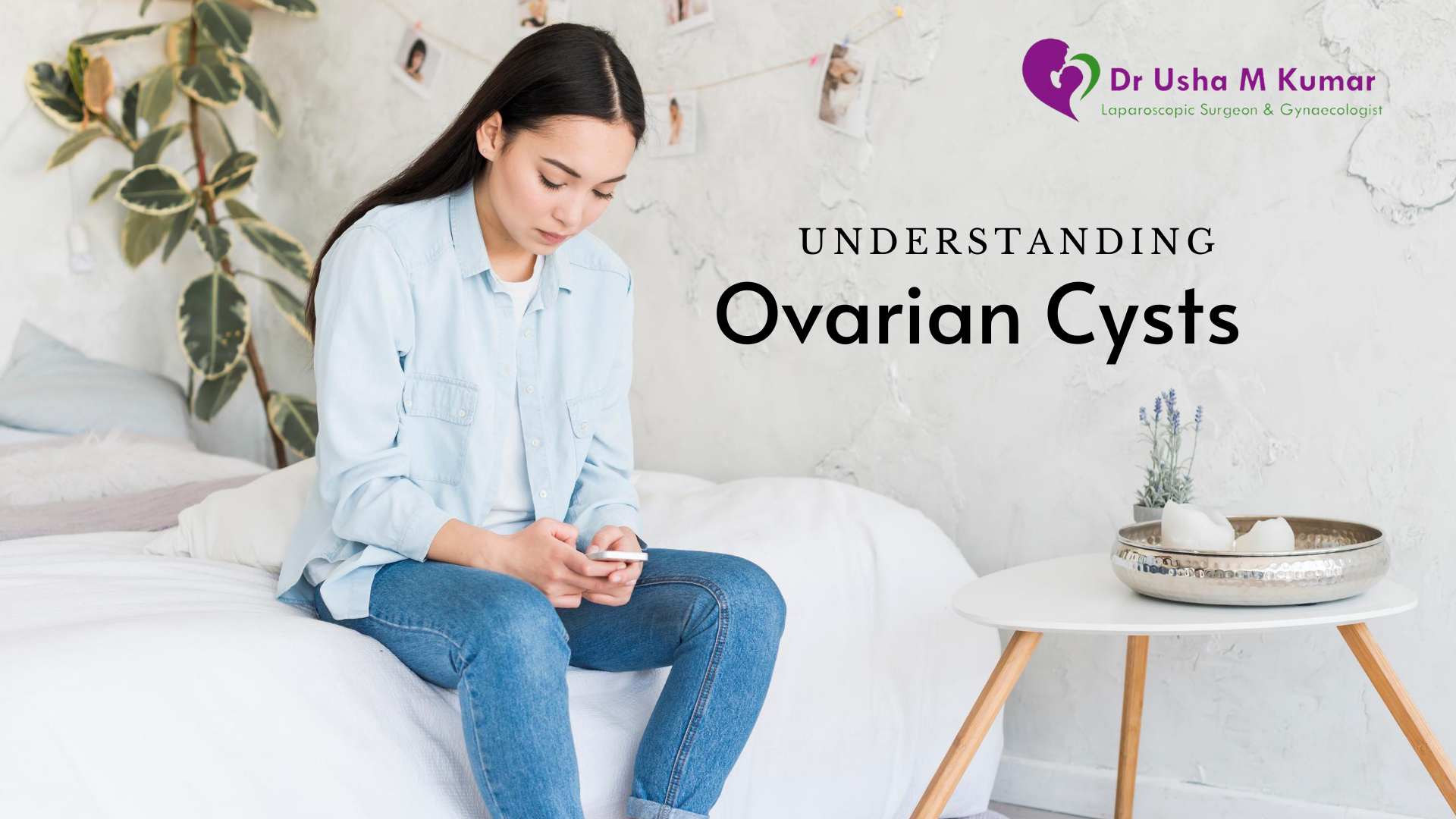
13 Jul Understanding Ovarian Cysts
Ovarian cysts are very common in women of all ages. Young girls can also get them, but this is less common. There are different types of ovarian cysts. Here’s Dr. Usha M Kumar, the best gynecologist in Delhi for ovarian cyst ovarian will tell what are they, and what to do about them.
Cysts in or on the ovary are solid. These are generally harmless and come and go as per menstruation cycles. However, in some women, these could turn large. It is observed that ovarian cysts can cause no symptoms in women and disappear on their own. Women can get pregnant as well if they have ovarian cysts. While some women can have concerns with conception or pregnancy if the cyst becomes abnormally large.
What do ovaries look like?
Women have a pair of ovaries. These are small, bean-shaped organs that play an essential role in women’s reproduction. Each ovary is on one side of the uterus.
The ovaries are responsible to release an egg approximately every 28 days as part of the menstrual cycle. These also release the female sex hormones, estrogen, and progesterone, which play an important role in female reproduction. Cysts can be present in both ovaries or may be visible in only one.
Symptoms of pelvic pain, nausea, bloating, and abdominal swelling may be persistent in large cysts. The blockage of blood supply to ovaries or rupturing may cause heavy bleeding.
Medical Diagnosis Of Ovarian Cysts
The two types of ovarian cyst are:
- Functional ovarian cysts are the most common. These develop as part of the menstrual cycle and are usually harmless and have a short life span.
- Pathological ovarian cysts are abnormal cell growth and are not as commonly observed.
Endometriosis is the most common reason for causing ovarian cysts.
It is observed that ovarian cysts are most of the time benign or not cancerous although these can be in a few cases cancerous (malignant). Cancerous cysts are more common in women.
Diagnosing ovarian cysts
To detect cysts in ovaries, an ultrasound is performed by using a probe placed inside your vagina. If a cyst is identified during the ultrasound scan and you may need to have this monitored with a repeat ultrasound scan in a few weeks.
Cysts can be as small as 3 mm to as large as a melon. Simple cysts are thin-walled and contain only fluid but complex cysts contain thick fluid, blood, and solid mass.
A simple cyst is a large follicle that has continued to grow after an egg has been released in the ovary. Whereas endometrioma cells are found outside the womb, sometimes cause ovarian cysts and these are called endometriomas.
A dermoid cyst develops from the cells that make eggs in the ovary and often contain substances such as hair and fat.
In the case of no symptoms, treatment may not be required. Whereas if symptoms persist or the ultrasound shows a large or a complex cyst one is referred to a Gynecologist for further investigation.
Treatment For Ovarian Cysts
Most of the time best gynecologist in Delhi for ovarian cyst suggests no hurry to remove the cyst but if it is getting bigger or is complex, surgery is recommended. The treatment depends on your symptoms, the appearance and the size, and the results of any blood tests.
- Technically, for a simple cyst measuring less than 5 cm in diameter, treatment may not be necessary. These cysts usually disappear after a few months.
- Whereas, a simple cyst that measures 5–7 cm in diameter requires ultrasound each year to ensure no further increase.
- A simple cyst that measures more than 7 cm in diameter further tests, such as magnetic resonance imaging (MRI) and/or surgery.
Consulting your Gynecologist on possible surgical options for you is advisable. Laparoscopy or Hysterectomy will be considered as per size, a number of cysts, and state of ovaries or uterus. To conclude, don’t panic when an ovarian cyst is diagnosed on ultrasound, consult the best gynecologist in Delhi for ovarian cyst, Dr. Usha M Kumar for an expert opinion.




Sorry, the comment form is closed at this time.